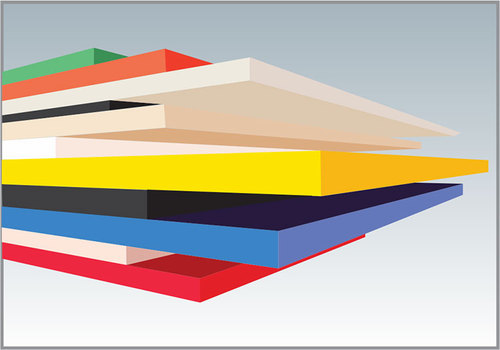The UHMWPE plate adopts the Ziegler type high-efficiency catalyst low-pressure synthesis method and is controlled above 1.5 to 3 million as required. Taking into account the thermal degradation of molecules during processing, high-density polyethylene with a viscosity average molecular greater than 1.7 million can be processed into various products to have more superior performance.
The UHMWPE plate adopts the Ziegler type high-efficiency catalyst low-pressure synthesis method, and is controlled above 1.5 to 3 million as required. Taking into account the thermal degradation of molecules during processing, high-density polyethylene with a viscosity average molecular greater than 1.7 million can be processed into various products to have more superior performance.

1. High wear resistance: UHMWPE plate has better wear resistance among all current engineering plastics and is more eye-catching. The higher the molecular, the more wear-resistant the material, even more than many metal materials (such as carbon steel, stainless steel, bronze, etc.). For example, UHMW-PE pipes have a service life of 4-6 times that of steel pipes under conditions of strong corrosion and high wear, and increase the transmission efficiency by 20%. It fully demonstrates the superiority of “energy saving, environmental protection, economy and high efficiency”.
2. Corrosion resistance: It is not corroded in lye and can be used in concentrated hydrochloric acid at 80°C. It has stable performance in 75% concentrated sulfuric acid and 20% nitric acid. It is also stable to seawater and liquid detergents.
3. Very low coefficient of friction: The coefficient of static friction is 0.07, and it has good self-lubricating properties. It is an ideal bearing, bushing, sliding block and lining material. Using UHMWPE plate as the friction part of the equipment can not only increase the wear-resistant life, but also receive energy-saving effects.
4. Impact resistance: The impact resistance ranks first among plastics. Whether it is a strong external force or internal pressure fluctuations, it is difficult to crack. Its impact strength is 10 times that of nylon 66, 20 times that of polyvinyl chloride, and 8 times that of polytetrafluoroethylene. Especially in low temperature environments, its impact strength reaches a higher value, and its flexibility can provide extremely safe transportation systems, reliable guarantee.
Post time: Apr-20-2019

